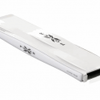Final Words & Conclusion
Final Words & Conclusion
The XPOWER Zenith RGB series from Silicon Power offers users a variety of options to choose from. If you're not a fan of RGB, there's a non-RGB variant available. In terms of frequency range, there are three options to choose from: 5200, 5600 (which we reviewed), and 6000 MHz. Furthermore, you can pick from two colors - white or black, and several capacities up to 2x32 GB kits. Out of the box, the Silicon Power XPOWER Zenith RGB 5600 CL40 kit delivers a satisfying performance. However, the Hynix M-Die memory chips used in this kit offer even more potential for those who want to tweak their settings. By adjusting the latency, frequency, and voltage settings, we were able to achieve an impressive CL36 with 6600 MHz at 1.435 V. It's important to note that overclocking results may vary, and we recommend using active cooling to ensure optimal performance.With a range of options to choose from, including non-RGB variants and various frequency and capacity options, users can find a kit that suits their needs. Additionally, the Hynix M-Die memory chips used in this kit offer plenty of potential for those who want to tweak their settings for even better performance.
Aesthetics
Silicon Power has made XPOWER Zenith RGB attractive. The RGB works as it should, and you can set lighting using the motherboard utilities. Overall, we’re glad about what XPOWER Zenith RGB offers in that department.
Tweaking
The memory chips used here come from Hynix, M-Die. As we usually state, the overclocking capabilities’ reproducibility is never guaranteed, and your results may vary. We achieved a nice tweaked CL36 with 6600 Mhz at 1.435 V (1.25 V is the baseline value). You can always lower the latencies further (CL32?) and leave the standard 5600 MHz frequency (we achieved 6000 MHz with CL32 on the AMD platform). Still, you’d better try to cool the memory down with some active cooling for the best results.
Conclusion
The Silicon Power XPOWER Zenith RGB series is an impressive memory product with a sleek design. Although the stock performance falls within the expected range, there is still considerable room for improvement, with the XMP 3.0 profile simplifying the overclocking process. In fact, our sample was able to achieve 6600 CL36 on an Intel platform and 6000 MHz CL32 on an AMD AM5 platform, which is a great result considering that these are 16 GB modules. Additionally, the relatively low-profile heat spreader (measuring only 39 mm) ensures that you won't encounter clearance issues with larger air CPU coolers.
While the 32 GB option may seem excessive for some users, it is quickly becoming the norm, especially in gaming setups, due to the introduction of the new RAM standard. Furthermore, the decreasing price of DDR5s, thanks to the AM5 platform introduction, makes the 32 GB option more accessible to a wider range of users. In recognition of its impressive speed and overclockability, we are pleased to award the Silicon Power XPOWER Zenith RGB series with the "Guru3D Approved" award. The temperature remains relatively low, and the aluminum heat spreaders are highly effective. Additionally, the RGB lighting is customizable, although this is now a standard feature among premium manufacturers. Customers can choose between a black variant (not white) and a non-RGB version, depending on their preferences.
If we had to make a few suggestions for improvements, we would like to see a wider selection of frequencies, including higher frequencies than the current highest offering of 6000 MHz. Furthermore, we hope that the price will continue to drop, bringing it closer to that of DDR4, which is also becoming increasingly affordable. Currently, the non-RGB version of the reviewed kit costs $103 (while the black version is almost $99), which may be seen as a downside to some customers. Nonetheless, the Silicon Power XPOWER Zenith RGB series remains an attractive DDR5 kit, and we highly recommend it to anyone seeking an upgrade in their memory capacity and speed.
- Sign up to receive a notification when we publish a new article
- Or go back to Guru3D's front page.


